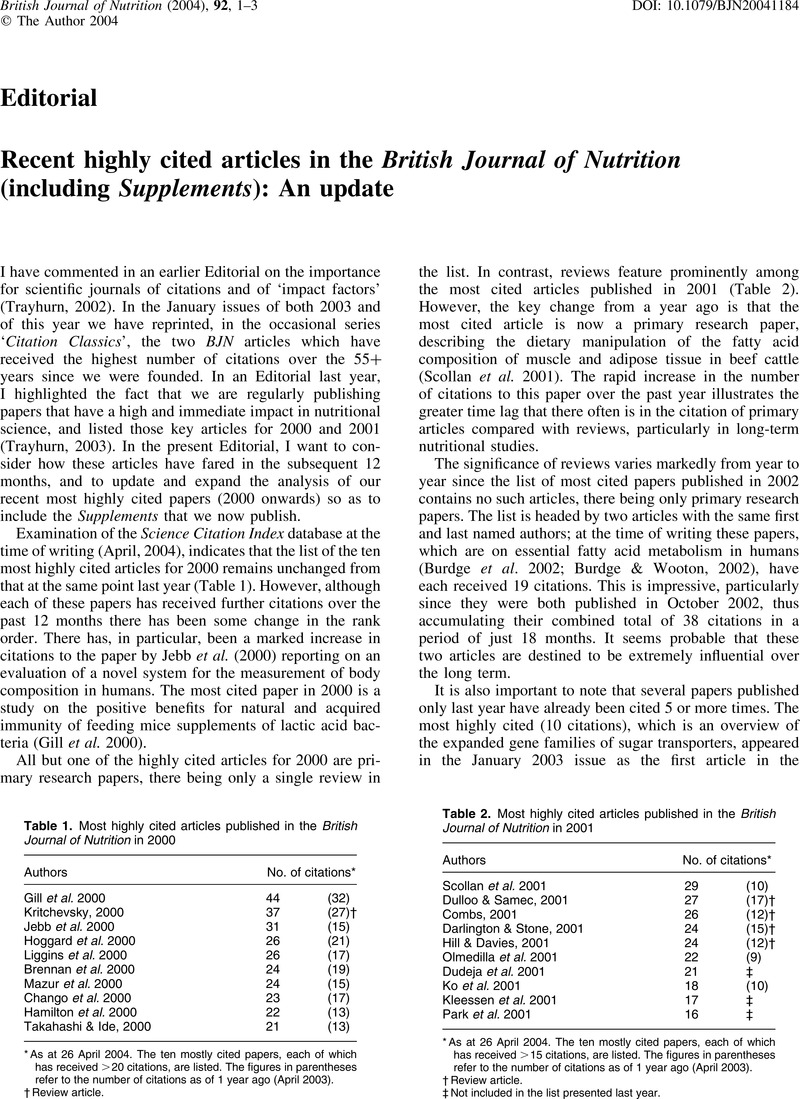Crossref Citations
This article has been cited by the following publications. This list is generated based on data provided by Crossref.
Trayhurn, Paul
2005.
Tempus fugit– evolution and current impact of theBritish Journal of Nutrition.
British Journal of Nutrition,
Vol. 94,
Issue. 3,
p.
299.
Calder, Philip C.
2006.
The British Journal of Nutrition, an international journal that continues to develop.
British Journal of Nutrition,
Vol. 96,
Issue. 01,
p.
1.
Calder, Philip C.
2006.
Carpe diem.
British Journal of Nutrition,
Vol. 95,
Issue. 1,
p.
1.
Calder, Philip C.
2007.
Floruit floreat.
British Journal of Nutrition,
Vol. 97,
Issue. 1,
p.
1.
Heck, J. E.
Marcotte, E. L.
Argos, M.
Parvez, F.
Ahmed, A.
Islam, T.
Sarwar, G.
Hasan, R.
Ahsan, H.
and
Chen, Y.
2012.
Betel quid chewing in rural Bangladesh: prevalence, predictors and relationship to blood pressure.
International Journal of Epidemiology,
Vol. 41,
Issue. 2,
p.
462.
Ho, Yuh-Shan
2014.
Classic articles on social work field in Social Science Citation Index: a bibliometric analysis.
Scientometrics,
Vol. 98,
Issue. 1,
p.
137.





